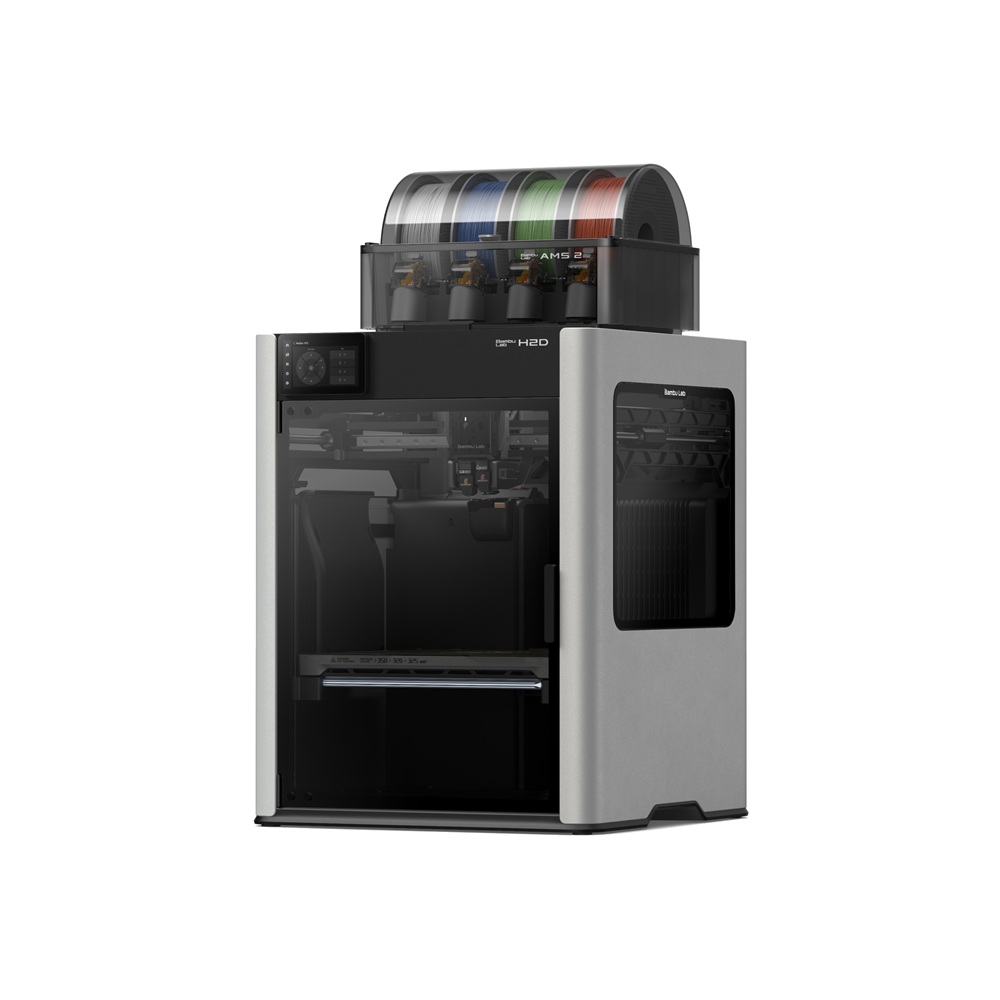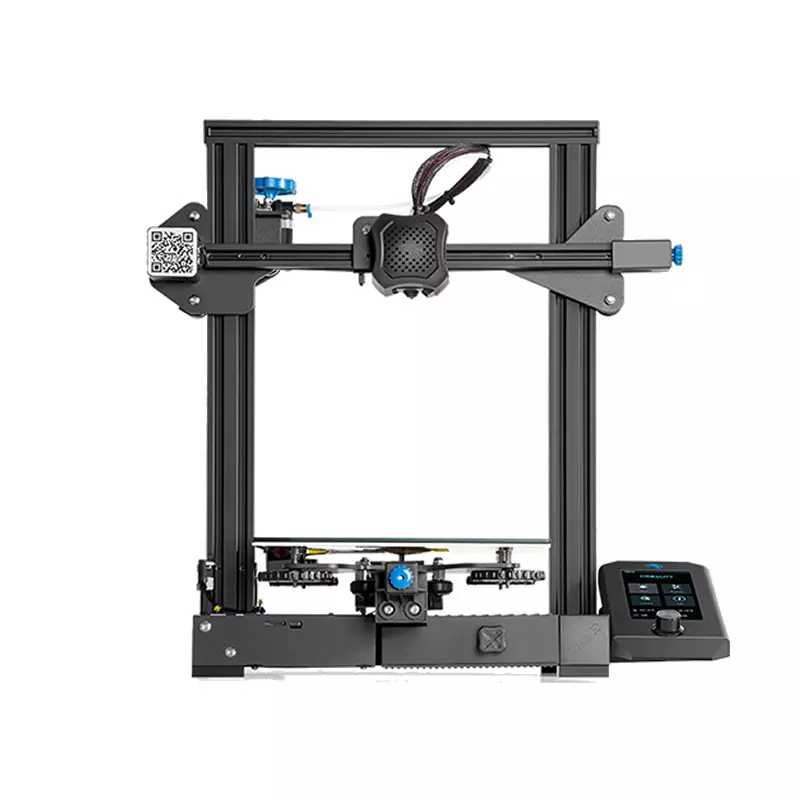Compare H2D vs Ender 3 V2
Comparison between the best 3D printers
Choose the best 3D printer at the best price. The cheapest 3D printers are here.
Buy a 3D printer here with 3D Fila.
 |
 |
|
| Model | H2D |
Ender 3 V2[BUY Ender 3 V2] |
| Printing Material | Filament | Filament |
| Buy Filament for Bambu Lab H2D | Buy Filament forCreality 3D Ender 3 V2 | |
| Estimated price | $1899,00 | $289,00 |
| Manufacturer | Bambu Lab | Creality 3D |
| Release Year | 2025 | 2022 |
| Print Volume [mm] | 350x320x325 | 220x220x250 |
| Printer Size [mm] | 492x514x626 | 470x475x620 |
| Weight [kg] | 42,3 | 7,8 |
| Power Loss Recovery | YES | YES |
| Enclosed printer | YES | NO |
| Bed Leveling | Automatic | Manual |
| Filament End Sensor | YES | NO |
| Bed type | Heated | Heated |
| Power supply system | Direct Drive | Bowden |
| Standard nozzle | 0,4 | 0,4 |
| Maximum Nozzle Temperature [°C] | 350 | 255 |
| Maximum Bed Temperature [°C] | 120 | 100 |
| Maximum printing speed [mm/s] | 600 | 180 |
| Filament holder | YES | YES |
| Camera for supervision | YES | YES |
| Recommended filaments | PLA, PETG, ABS, ASA, TPU, PVA, Nylon (PA) | PLA, TPU, ABS, PETG |
| Recommended slicers | Bambu Studio | Cura, Simplify, Slic3r |
| Maximum Resolution [mm] | 0,01 | 0,1 |
| Processor | 32 bits | |
| Display | Touchscreen 5'' | Touchscreen TFT 4,3'' |
| Power Supply | 24V / 360W | |
| Connectivity | Wifi, Bambu bus, Cartão SD | SD / USB |
| Operating systems | Windows, Mac, Linux | Windows, Mac, Linux |
| Date of registration in the system | 2025-03-31 | 2021-04-15 |
| Release date | 2025 | 2022 |
| Extra features | Bambu Labs H2D combines high-speed 3D printing with a chamber heated up to 65 °C, dual extrusion with automatic nozzle switching, an AMS for filament drying and exchange, and AI sensors that detect failures. It offers optional laser and digital cutting capabilities, features intelligent calibration through computer vision, vibration control, enhanced fire safety, and real-time camera monitoring. | The Creality Ender-3 V2, with a design inspired by the Prusa i3 series, stands out for its DIY assembly structure. With an area of ??250x250x250mm, it supports a variety of projects. It has a micro-USB port, microSD slot and integrated tool drawer. The tension adjustment adapts to different regions. Its manual print bed leveling process requires attention, but offers an enriching experience. Ideal for 3D printing enthusiasts willing to invest time in assembly and adjustment. |
| Support for multiple colors and materials (AMS and CFS) | YES | NO |
Notes * |
||
| Cost-benefit | 7 / 10 | 7 / 10 |
| Hardware | 8 / 10 | 2.1 / 10 |
| Tela | . | . |
| Print volume | 4 / 10 | 3 / 10 |
| Performance | 5 / 10 | 1 / 10 |
| [BUY Ender 3 V2] |
Conclusion |
| In comparing the H2D by Bambu Lab and the Ender 3 V2 by Creality 3D, it becomes clear that both models cater to distinct segments of the 3D printing market. The H2D stands out with its advanced features and capabilities, specifically tailored for high-speed printing and versatility. It boasts a significantly larger print volume, automatic bed leveling, an enclosed design for better temperature control, and intelligent sensors for enhanced reliability. The printer’s ability to handle a wider range of filament types and its innovative dual extrusion system make it a powerful choice for serious users seeking quality and efficiency in their prints. Additionally, the various connectivity options and a robust software ecosystem provide an integrated experience for advanced users. Conversely, the Ender 3 V2 offers a more budget-friendly entry point for enthusiasts and beginners. Its DIY assembly process fosters a learning experience that appeals to those willing to invest time in understanding their machine. While it lacks some of the advanced features of the H2D, such as automatic bed leveling and comprehensive material support, it still delivers reliable performance for general 3D printing tasks. The open-frame design and lower price make it a popular choice for hobbyists and those new to the 3D printing realm. Ultimately, the decision between these two models should be guided by the user's printing needs and budget. The H2D excels in offering state-of-the-art technology and speed for professional or highly demanding applications, whereas the Ender 3 V2 remains an excellent choice for those looking to explore the world of 3D printing without a substantial financial commitment. |

